As a small pet owner, it’s important to provide a balanced diet to ensure your furry friend stays healthy and happy. One way to achieve this is by incorporating yellow snacks into their diet. Yellow snacks like corn, carrots, squash, bananas, and more are not only delicious but also nutritious for your small animal. When introducing new foods, it’s important to take precautions and start with small portions to avoid digestive issues. Mixing yellow snacks with their regular meals can provide a balanced diet, and there are even recipes available for homemade treats and snacks. By experimenting with different food groups and snacks, you can give your small animal a varied and enjoyable diet while keeping their safety in mind.

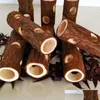

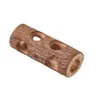
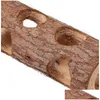

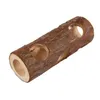
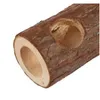
Introduction: Understanding the Importance of Balanced Diets for Small Animals
When it comes to small animal diets, it’s important to remember that not all foods are created equal. While some may be okay in moderation, others can be harmful if fed too frequently or in large quantities. This is why it’s important to research your pet’s dietary requirements and consult with a veterinarian or knowledgeable pet store employee before making any major changes to their diet.
One of the most important things to keep in mind when feeding your small animal is the need for variety. Just like humans, animals thrive on a diverse diet filled with different food groups. For example, rabbits require a combination of hay, fresh vegetables, and pellets to maintain a healthy weight and prevent dental issues. Guinea pigs, on the other hand, need an even larger variety of fruits and vegetables to avoid developing scurvy, a disease caused by a lack of vitamin C.
In addition to incorporating a range of food groups into your pet’s diet, it’s also important to pay attention to serving sizes and frequency. Overfeeding can lead to obesity and other health issues, while underfeeding can result in malnourishment and stunted growth. For example, hamsters should be fed a small amount of high-quality pellets once a day, along with fresh fruits and vegetables a few times a week. Overfeeding sugary snacks like yogurt drops or fruit slices can lead to diabetes and other health issues.
Yellow Snacks for Small Animals: Types and Benefits
Small animals, such as hamsters, guinea pigs, and rabbits, have specific dietary needs that must be met to ensure their health and well-being. One important aspect of their diet is the inclusion of yellow snacks, which provide essential nutrients and vitamins. In this article, we will explore the various types of yellow snacks that can be included in a small animal’s diet and the benefits they offer.
When it comes to yellow snacks for small animals, there are several options to choose from. One popular choice is corn, which is not only visually appealing but also packed with essential nutrients such as fiber, vitamin C, and antioxidants. Additionally, carrots are another excellent yellow snack option for small animals, as they are rich in beta-carotene and vitamin A, both of which are essential for maintaining good eyesight and a healthy immune system. Squash is also a great choice, as it is high in vitamin C and potassium, which can help support a small animal’s overall health.
Bananas are another yellow snack that small animals can enjoy. They are a good source of potassium, which is essential for maintaining proper muscle function and heart health. Furthermore, bananas are high in fiber, which can aid in digestion and prevent gastrointestinal issues in small animals. Other yellow snacks that can be beneficial for small animals include yellow bell peppers, which are rich in vitamin C, and pineapple, which contains bromelain, an enzyme that can aid in digestion.
In addition to being visually appealing, yellow snacks offer a range of nutritional benefits for small animals. These snacks are rich in essential vitamins and minerals that are crucial for maintaining their overall health. For example, vitamin C, which is found in many yellow snacks, is essential for preventing scurvy in small animals. Additionally, the fiber content in these snacks can help support healthy digestion and prevent constipation, which is a common issue in small animals.
Furthermore, the antioxidants found in yellow snacks can help support a small animal’s immune system and protect them from illness. By including a variety of yellow snacks in their diet, small animals can receive a well-rounded nutritional intake that supports their overall health and well-being.
Safety Measures When Providing Yellow Snacks
When introducing new foods into the diet of small animals, it is important to do so gradually. Small animals have sensitive digestive systems, and sudden changes in their diet can lead to digestive upset. Therefore, it is best to introduce one new food at a time and monitor your pet for any signs of digestive issues such as diarrhea or bloating. If your pet tolerates the new food well, you can slowly increase the amount given over the course of a few days.
In addition to introducing new foods gradually, it is important to choose yellow snacks that are safe for small animals to consume. For example, fruits like bananas and bell peppers are safe for most small animals in moderation, while some vegetables like corn should be given sparingly due to their high sugar content. It is important to research which yellow snacks are safe for your specific pet and to avoid feeding them any foods that are toxic to their species. For example, avocados are toxic to birds and should never be given to them.
Another important safety measure when providing yellow snacks to small animals is to consider portion sizes and frequency of giving these treats. While yellow snacks can be a healthy addition to a small animal’s diet, they should be given in moderation to avoid overfeeding. Too much of a good thing can lead to obesity and other health issues in small animals. Therefore, it is important to offer yellow snacks as occasional treats rather than as a staple of their diet. A good rule of thumb is to offer yellow snacks no more than a few times a week, and to limit the portion size to a small amount that is appropriate for the size of your pet.
Incorporating Yellow Snacks into Your Small Animal’s Diet
When it comes to adding yellow snacks to your small animal’s diet, it’s important to remember that these should be used as a supplement to their regular food. Your pet’s diet should consist mainly of pellets or hay, and any additional treats should only make up a small percentage of their daily intake.
One easy way to mix yellow snacks with your pet’s regular food is by simply scattering them over the top of their pellets or hay. This will encourage your pet to forage for their food, providing mental stimulation while also ensuring they’re getting the nutrients they need. Try mixing in some dried corn or pieces of carrot for a tasty and healthy mix.
Another option is to create delicious homemade treats that include yellow snacks. One popular recipe is for banana and oatmeal cookies for rabbits. Simply mix together oats, mashed ripe bananas, and grated carrots to create a yummy treat that your rabbit will love. You can even add in some dried corn kernels for an extra crunch.
For guinea pigs, try making a veggie kebab using chunks of yellow bell pepper, cherry tomatoes, and cucumber. These can be grilled or roasted for added flavor, and your guinea pig will love nibbling on the different veggies.
It’s important to remember that not all yellow snacks are created equal. Some may be high in sugar or low in nutrients, so it’s important to do your research before adding anything new to your pet’s diet. Stick to fresh fruits and vegetables, and avoid processed snacks or those with added preservatives.
Conclusion: Final Thoughts on Feeding Yellow Snacks to Small Animals
Firstly, not all yellow snacks are created equal. Some snacks may contain hidden sugars or additives that could be harmful to your pet’s health. When choosing yellow snacks, it’s important to read the ingredients label carefully and choose options that are free from harmful additives or added sugars.
Secondly, portion control is crucial when it comes to feeding yellow snacks to small animals. While they may seem like a harmless treat, overfeeding can lead to obesity or other health problems. Pet owners should limit their pet’s snack intake to no more than 10% of their daily diet and offer them in moderation.
Thirdly, variety is key when it comes to providing a well-balanced diet for small animals. While yellow snacks may be a favorite, it’s important to incorporate different food groups into their diet to ensure they’re getting all the nutrients they need. Fresh fruits and vegetables, hay, and high-quality pellets can all be great additions to your pet’s diet.
Lastly, safety should always be a top priority when feeding yellow snacks to small animals. Some foods, such as chocolate or avocado, are toxic to pets and should never be given to them. Additionally, certain types of yellow snacks, such as popcorn or nuts, can pose a choking hazard if not prepared correctly. Pet owners should always supervise their pets while they’re snacking and make sure they’re eating safely.
In conclusion, feeding yellow snacks to small animals can be a fun way to bond with your pet and provide them with a tasty treat. However, it’s important to remember that not all snacks are created equal, and pet owners should always prioritize their pet’s safety and wellbeing. By reading ingredient labels, practicing portion control, incorporating variety into their diet, and ensuring their safety, pet owners can enjoy giving their furry friends yellow snacks without any worries.
FAQ
Q: Can I feed yellow snacks to my small animal daily?
A: It is not recommended to feed yellow snacks to your small animal on a daily basis. These treats should be given in moderation, as they are high in sugar and can lead to obesity and dental problems. It is best to offer yellow snacks as occasional rewards during training or as a special treat on occasion.
Q: What types of yellow snacks are safe for my small animal to eat?
A: When choosing yellow snacks for your small animal, it is important to select options that are safe and appropriate for their species. Some safe options include dried fruits such as apricots, bananas, and papaya, as well as small amounts of corn, squash, and sweet potato. Always check with your veterinarian before introducing any new foods to your small animal’s diet.
Q: How much yellow snacks can I give my small animal at once?
A: The amount of yellow snacks you can give your small animal depends on their species and size. As a general rule, treats should make up no more than 10% of your small animal’s daily diet. For example, one small slice of banana or a few pieces of dried apricot would be an appropriate portion for a hamster or gerbil.
Q: Are there any yellow snacks that are toxic to small animals?
A: Yes, some yellow snacks can be toxic to small animals. Avocado, for example, contains persin which is toxic to birds, rabbits, and rodents. Additionally, any yellow snack that has been treated with pesticides or other chemicals should be avoided. It is important to research the safety of any new foods before offering them to your small animal.

